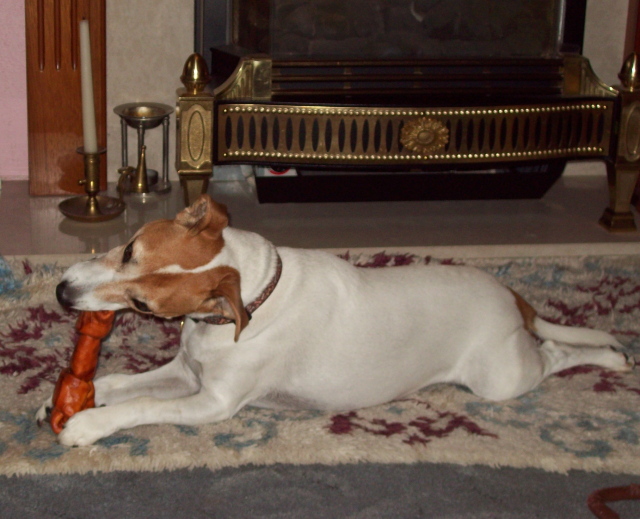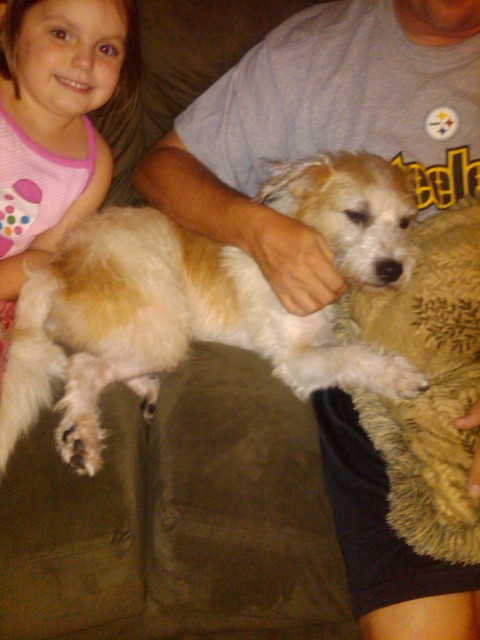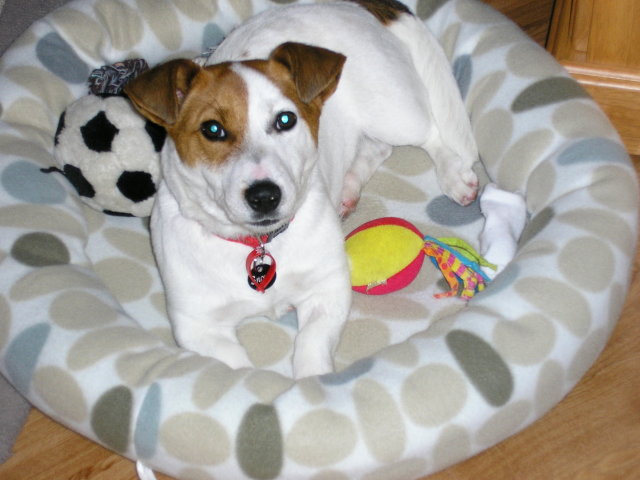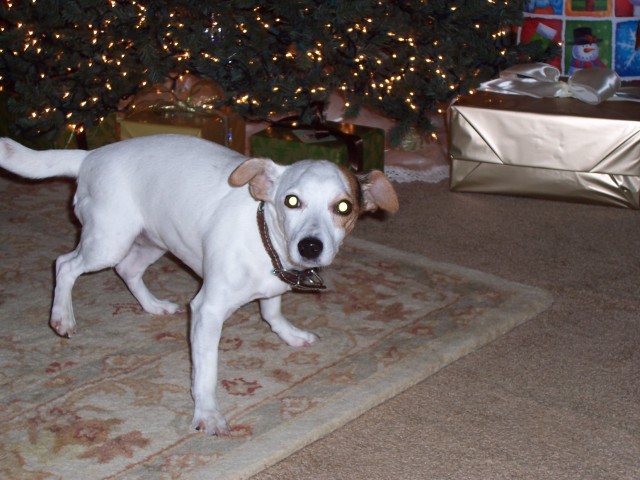QuestionPleas help.I buy 10 weeks old JRT hi was fine but after 1 or 2 wks hi start pushing his bad under his body stop walking on his back lags more jumping then walking and after month right now hi almost just laying down and sometimes jumping shortly on his back lags and try to put all his weight on front legs(when hi eat,drink or pieing) ex ray show good bones so maybe nervs or muscle problem.hi is not i any pain,not cry or anything pleas help
AnswerHello Pavel,
If you bought your dog from a professional jack russell breeder you should be able to return the puppy for a full refund or for a replacement puppy. I know that's hard to do after you get attached to the one you have. If you bought the puppy from a pet store I'm sorry to say that you have probably purchased a puppy mill puppy who is going to have lots of health problems. There is a condition that is called Leggs Perth Disorder, which affects the back legs and is common in Jack Russells. Take him back to the vet and have him tested for this disorder.. make sure they check the puppy's HIPS and be prepared to keep spending money on health care for the puppy if he was bought at a pet store. I'm sorry you're having this trouble, it's not fair and it's not right but it's all too common. If you got him from a breeder, you should demand that they make restitution on this problem. I wish you and the dog the very best of luck. :(
If you got the dog from a breeder I'd like you to email me at
carolf1209@yahoo.com and tell me who they are.
Here is some more information on Leggs Perth:
Legg-Perthe's disease is a degeneration of the hip joint occurring in young dogs. It is also known as Legg-Calve-Perthe's Disease, Perthe's disease, Calve-Perthe's disease, or in medical terminology, avascular necrosis of the femoral head and neck. The former names recognize the original researchers in the disease as it occurs in humans.
Legg-Perthe's disease (LPD) occurs most frequently in dogs 5 to 8 months of age, with a reported range of 3 to 13 months. It occurs primarily in small dogs, and has been reported in many small and toy breeds, including Italian greyhounds. Affected dogs are normal prior to the onset of the disease. Symptoms of LPD are lameness, and pain in the area of the affected hip. In some cases, the symptoms may be mild, and possibly go unnoticed. Upon examination, pain can be elicited by a skilled examiner by moving the hip in a variety of directions.
Prevention of the disease is only possible through genetic means. Affected animals should not be bred or shown. Breeding stock should have their hips X-rayed to insure that they are not affected with mild LPD, the symptoms of which went unnoticed during the dog's adolescence. It is easy for a judge to determine this surgery as all they have to do is put their thumbs on the hocks of these corrected dogs and gently extend their legs and it is obvious that one leg is shorter than the other by about an inch.

 Parson Jack Russell Terrier bitch
Question
Pippa
My PJR bitch was 5 last December. She ha
Parson Jack Russell Terrier bitch
Question
Pippa
My PJR bitch was 5 last December. She ha
 My Rescued Jack Mix
Question
Oliver
Hello Carol!
I am thrilled to see there
My Rescued Jack Mix
Question
Oliver
Hello Carol!
I am thrilled to see there
 Jumping at the TV
QuestionQUESTION: Im sorry, you may have been asked thi
Jumping at the TV
QuestionQUESTION: Im sorry, you may have been asked thi
 2 Jack Puppies 10 week old
Question
Lola Jack
Hi!....We just bought t
2 Jack Puppies 10 week old
Question
Lola Jack
Hi!....We just bought t
 Jack Russell w/ Equiliberum problem
Question
Suzy Q
I have a 10 year old JR who has not bee
Jack Russell w/ Equiliberum problem
Question
Suzy Q
I have a 10 year old JR who has not bee